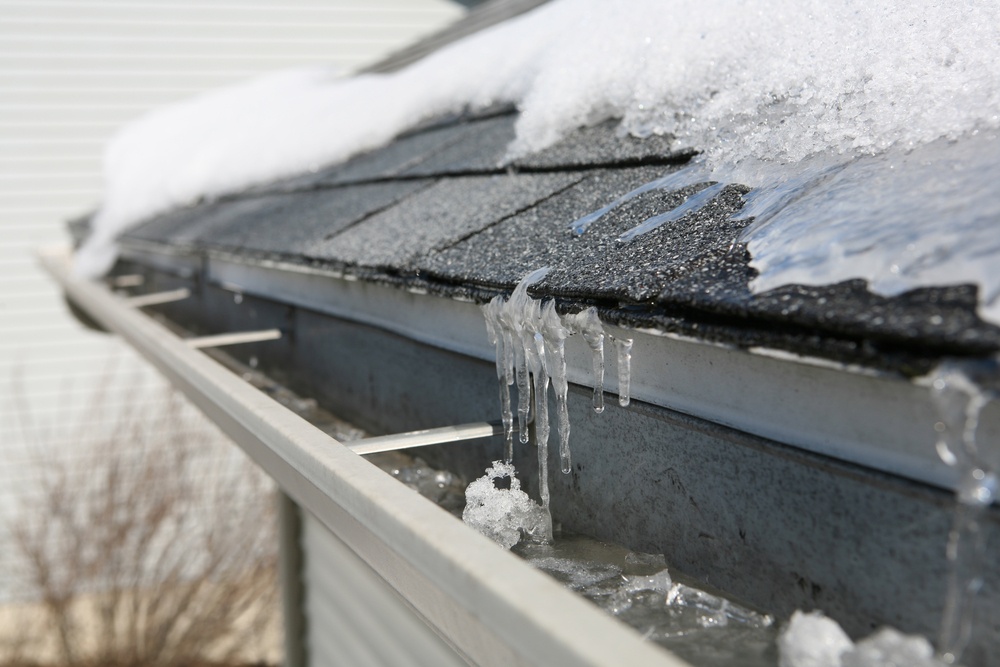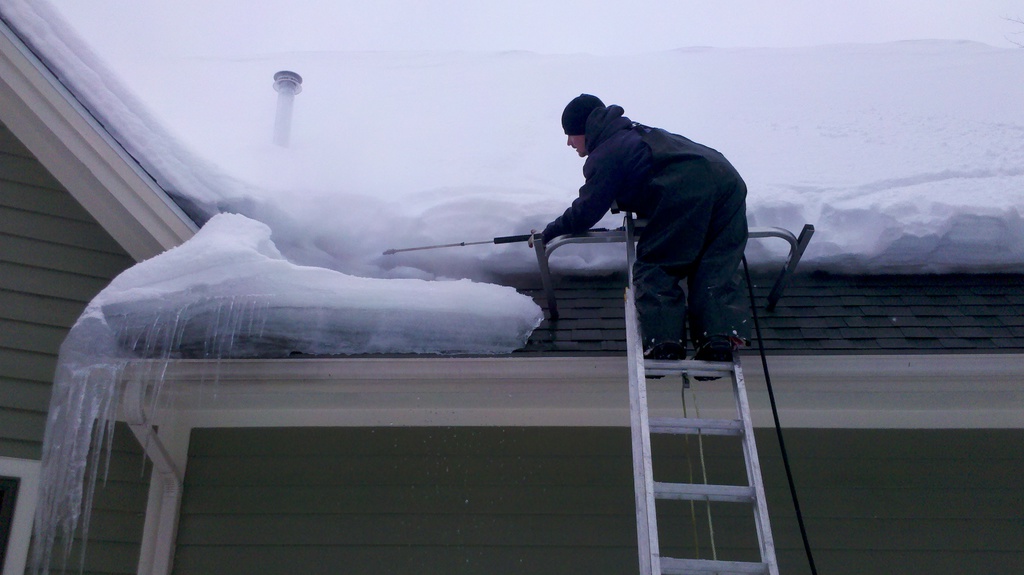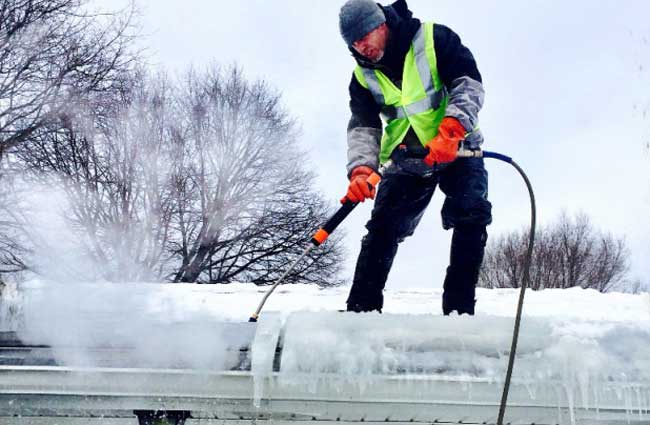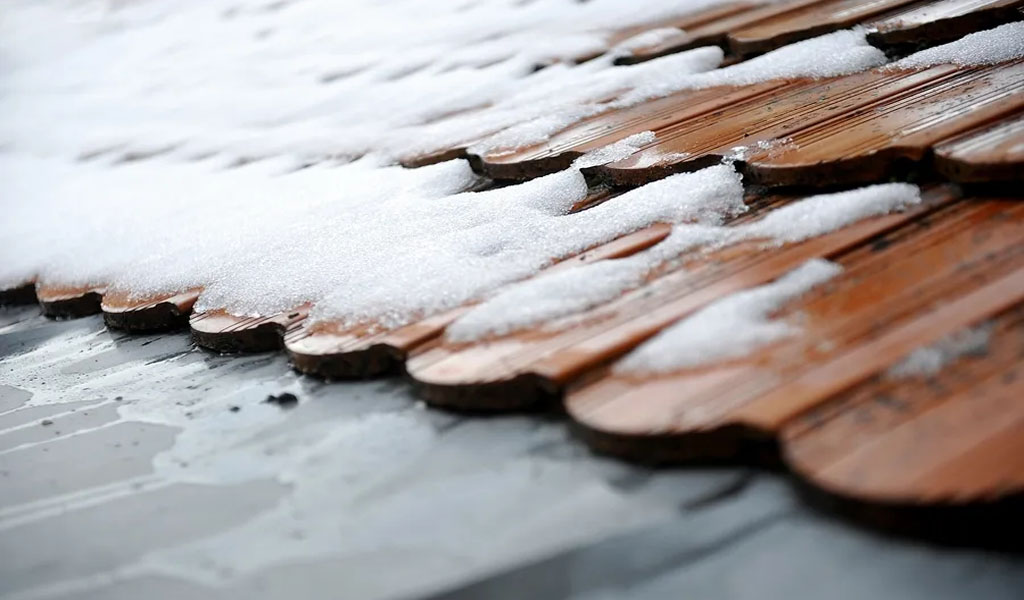What Causes My Roof To Leak?
Despite spring rains, summer storms, and blustery autumn winds, you made it through. So why does your roof leak now that winter has hit? Is a leak a sign that you need to replace your roof? Although water may accumulate on your walls or ceilings during the winter months, most of the causes are relatively minor. These conditions are usually not indicative of a serious roofing leak.
Gutter Medics often respond to roof leaks in winter at homes where the homeowners are experiencing roof leaks. These leaks are usually caused by ice dams. Ice dams are formed when snow on the roof melts, flows down the edge, and then freezes again when temperatures drop.
Contact us today if you’re interested in learning more about our services! (630) 922-3131
If this ice dam blocks water from draining off the roof, it can cause ceilings, walls, and eaves to be damaged by water. To find out if our services suit your goals, you can see the reviews on our website.
If you’re experiencing a leak in your roof during the winter, you may be dealing with an ice dam. Ice dams are a common problem during the winter, and they can cause extensive damage to your roof and home. In this blog post, we will discuss what ice dams are, what causes them, and how to prevent them from happening.
Want to know more about Gutter Medics? Click About Us.

What Is An Ice Dam?
What Is Ice Damming On Roof? Ice damming is typically caused by melting snow running down the surface of a roof and then refreezing. As the snow on the roof’s underside melts, warm air rises from the attic. Temperature fluctuations can also contribute to the melting of snow.
The melted snow eventually makes its way to the deck over the eaves, which does not get heated by the attic. When the snow melts, it eventually makes its way down to the deck. This is where the ice usually starts to form.
As the water refreezes, ice builds up and blocks the run-off, causing a dam. Some of the pooled water then makes its way beneath the shingles, which were designed to shed water, not carry it away. As it re-freezes, the shingles are lifted from the roof deck, allowing water access to the deck.
This risk can be drastically reduced if preventative measures are taken before the season, such as installing waterproof roofing underlayment or installing heating strips in drains and downspouts.
Why Is My Roof Leaking During Winter?
1. Find The Source
When water leaks into your home, you can usually tell where and how it has entered. If you observe staining along an exterior wall, you might have ice damming along your gutters and eaves allowing water into your home. You’re likely to have leaky flashing around where your chimney penetrates your roof if you have dampness on walls near the chimney.
On the other hand, it is often impossible to determine where or how water is coming in, especially if the area affected is large or if the moisture comes from inside the house. There is a possibility that an upstairs ceiling that is damp might result from exhaust venting into the attic rather than venting outside the house (something common in many older homes).
Attic condensation can occur when too much moisture accumulates in the attic, seeping through the ceiling and causing moisture to build up and discoloration to occur. Moisture can appear on a ceiling or wall that is near the center of the house, far from exterior walls, due to a plumbing leak or condensation around poorly insulated pipes.
2. Evaluate The Damage
Find out how much damage was caused by the water once you have located its source. By the time you notice a leak, water may have been entering your house for weeks or even months. Mold and mildew can develop due to long-term seepage and moisture, which is harmful to your family’s health and causes breathing difficulties.
Continual excessive moisture infiltration through the ceiling, walls, and roof of your home can lead to the framing of your house rotting, compromising its structural integrity. When moisture damage to roof framing is extensive, it may be necessary to repair or replace it before the roof can be installed. Therefore, it’s important to regularly inspect your roof and repair any damaged areas before they become severe.

3. Come Up With A Solution And Implement It
Many leaks around roof penetrations such as chimneys, dormers, and vents can be repaired by replacing flashing and repairing the seal between the protrusion and the roof. In most cases, roofers can repair these problems relatively quickly and easily, even during the winter months.
Condensation in your attic can be corrected by removing, replacing, or enhancing the insulation in your attic and by installing ventilation systems (which will also improve your home’s energy efficiency, lowering your heating and cooling costs).
Insulating your attic will also prevent ice dams from occurring. There may also be a solution in the use of heat cables on your ice dam roof for particularly problematic areas where ice tends to accumulate and cause winter water infiltration. Localized plumbing leaks should be repaired by a qualified plumbing professional who has experience finding and repairing them.
What Causes Ice Dams?
Melted snow forms ice dams at roof edges when it refreezes. A snow dam forms when snow is covered by heat, which melts the snow, followed by the cold that refreezes the melted snow. As heat rises from the interior of the home, it travels through the ceiling and enters the attic.
A well-ventilated attic prevents heat from accumulating, making the attic area and roof deck as cold as the outdoor air. If the attic is not ventilated properly, heat collects under the roof deck and causes the snow to melt. During winter, snow melts from the roof slope to the roof eave and then refreezes before dripping off. The thickening ice at the eaves eventually creates a “dam” that captures the melted snow behind it, creating a pool of water.
Different types of damage can be caused by ice dams. As the water from melted snow continuously flows, it pools on the roof surface and eventually backs up. There is a possibility that the pool of water will seep under the shingles and into the home, resulting in water damage to interior walls, ceilings, insulation, and other areas.
Ice dams can sometimes damage roof coverings, as well. As the water continues to freeze, it can form a large quantity of ice in the gutters. When ice builds up, it can cause a weight problem, leading to gutters collapsing.
Roof Ice Dam Prevention
It is difficult to remove ice dams, so you should prevent them from forming in the first place. Keeping your attic and roof cold is the best way to prevent ice dams. The roof of a cold building will be covered in thick layers of snow after a snowfall. If the roof is warmer, there will soon be spots free of snow that have melted, and there may even be icicles hanging from the eaves. Make sure you follow these three steps to keep your roof cold:

1. Block Off Attic Bypasses
In the average house, about a third of the heat is lost through the ceiling and into the attic. Most of this air loss comes from leaks in unblocked walls, gaps in drywall, and cracks around light fixtures, plumbing pipes, chimneys, access hatches, and other penetrations in the ceilings.
It can be very difficult to stop an air leak. The only way to fix leaks in your attic is to remove the insulation or rake it back, then plug the leaks with foam, caulk, and other tools. Certain air leaks can be hard to find because of the low angle of the roof. In any other case, your attic will be unbearably hot during this work. You should always wear a dust mask, a long-sleeved shirt, and long pants when working with insulation to avoid skin irritations.
2. Check The Attic Insulation Level
Check the depth of the attic insulation while you’re there. You should upgrade it to an R-value of at least 40. The building code requires a minimum of 12 inches to 14 inches of fiberglass or cellulose. If you have had ice dam problems in the past and have less than 8 inches of snow, add more.
Hand-placed batts tend to leave gaps around rafters, joists, and other obstructions. Cellulose and fiberglass are usually better because they fill more tightly. It’s usually best to hire a professional for this job since you are unlikely to save much by doing it yourself.
It is possible to rent a blowing machine from a rental yard or home center if you cannot find a good price. Insulation is often purchased free of charge with the use of the machine.
3. Install Roof Vents And Soffit Vents
By pulling in cold outdoor air and exhausting warm attic air, attic ventilation cools the attic and roof. Ventilation areas (size of openings in ceilings) should be approximately one square foot per 300 square feet of ceiling space (attic roof space) when half of the vents are located in the low portion of the roof and half in the high portion.
If you found out that you’re experiencing roof leaking in winter, ice dams may be the culprit. The best way to diagnose this issue and make sure it doesn’t happen again next year is by calling a professional gutter medic who can install gutters with an overflow system or other waterproofing solutions. Don’t let water damage ruin your home. Gutter Medics can help you prevent Ice Damming and other roof leaking problems.
Contact us today if you’re interested in learning more about our services! (630) 922-3131

